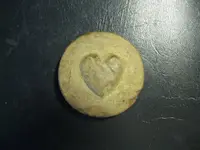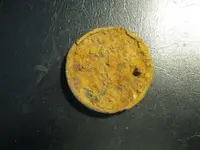Erving
Hero Member
- Joined
- Apr 27, 2013
- Messages
- 551
- Reaction score
- 428
- Golden Thread
- 0
- Location
- Massachusetts
- Primary Interest:
- Metal Detecting
I don't know very much about Civil War relics, and was wondering if this rosette I found was from the Civil War. I would appreciate any input you might have. Thanks!


Doing a little research, I found one that looks like a match. It's the 7th photo down. I would like to hear what the ones with Civil War knowlege here think. Thanks
http://www.usmilitaryrelicsandaccoutrements.com/dug_relics.html


Doing a little research, I found one that looks like a match. It's the 7th photo down. I would like to hear what the ones with Civil War knowlege here think. Thanks
http://www.usmilitaryrelicsandaccoutrements.com/dug_relics.html
Amazon Forum Fav 👍
Last edited:



